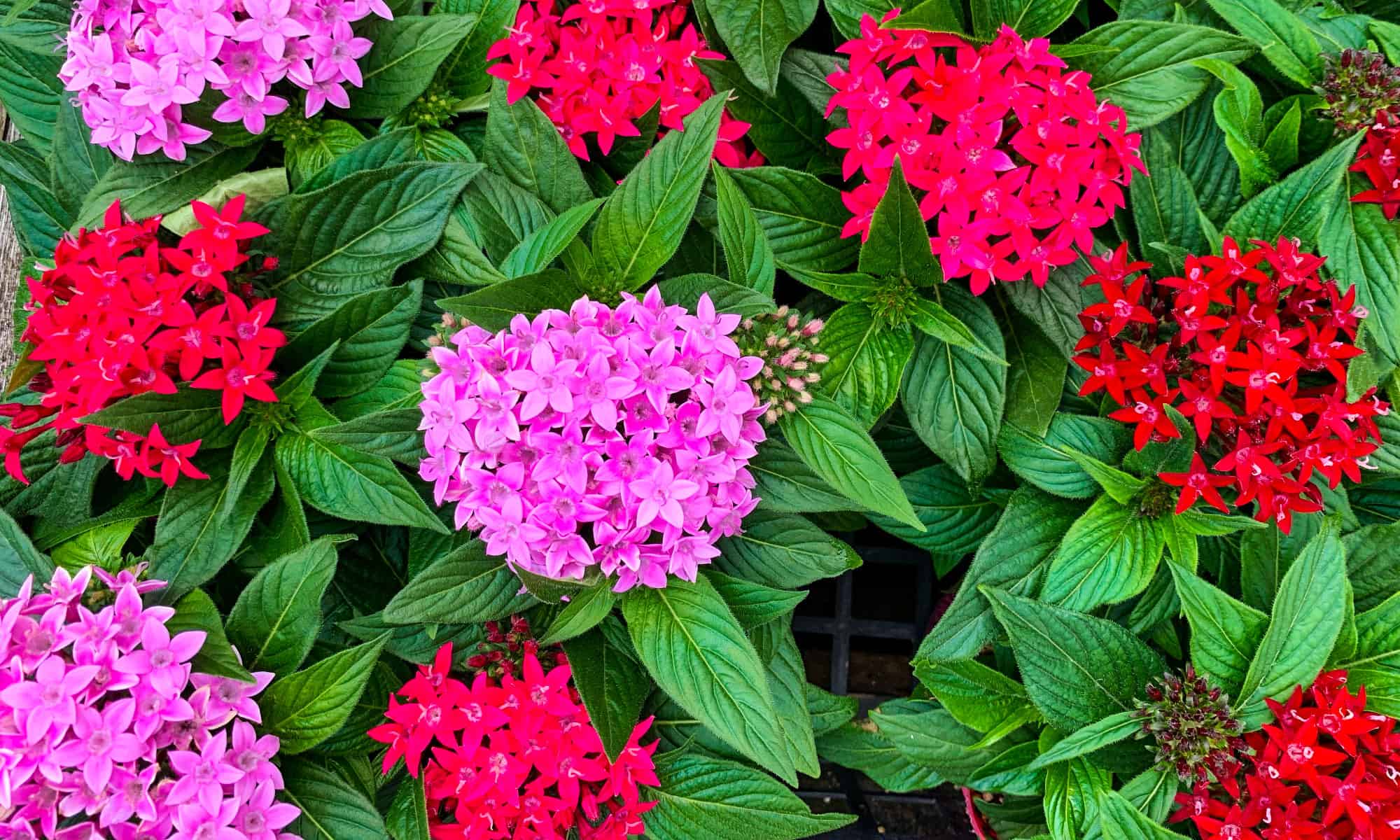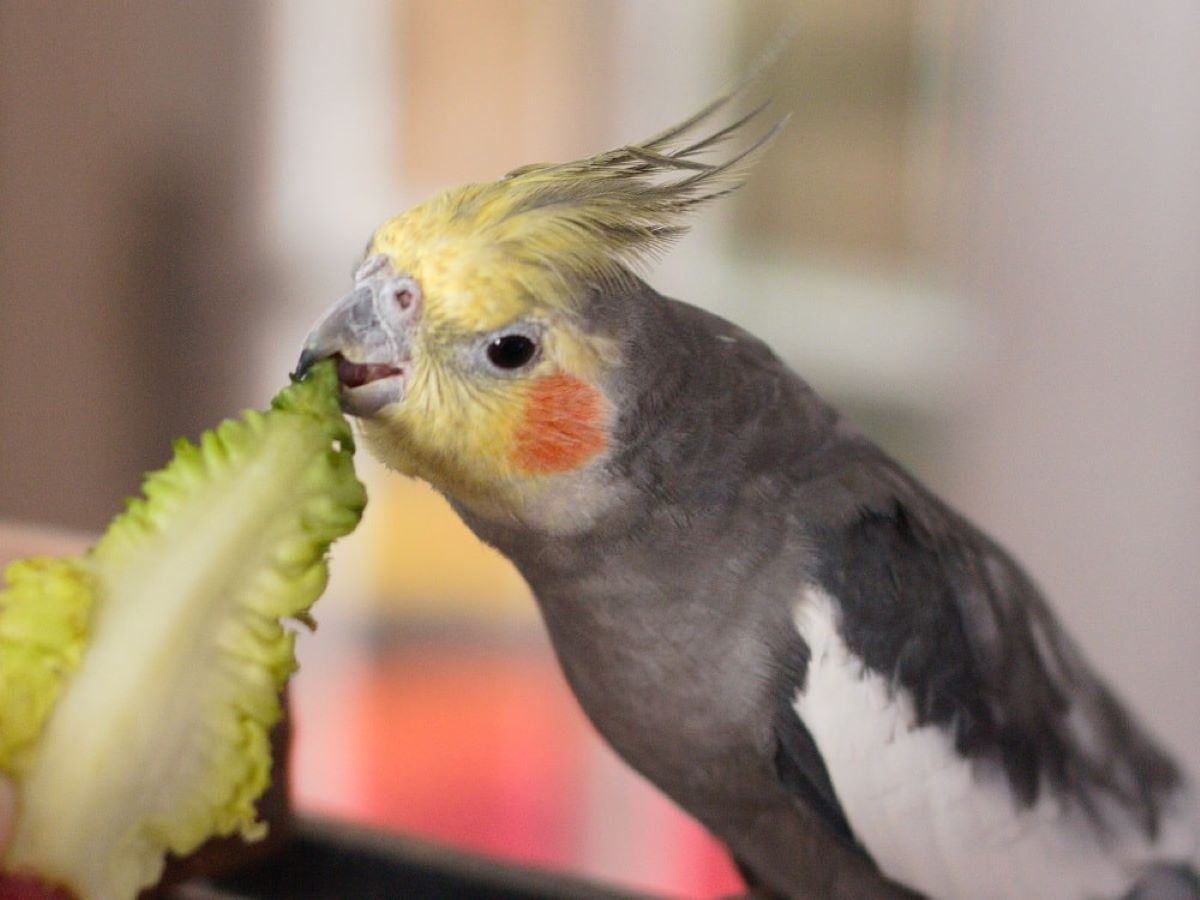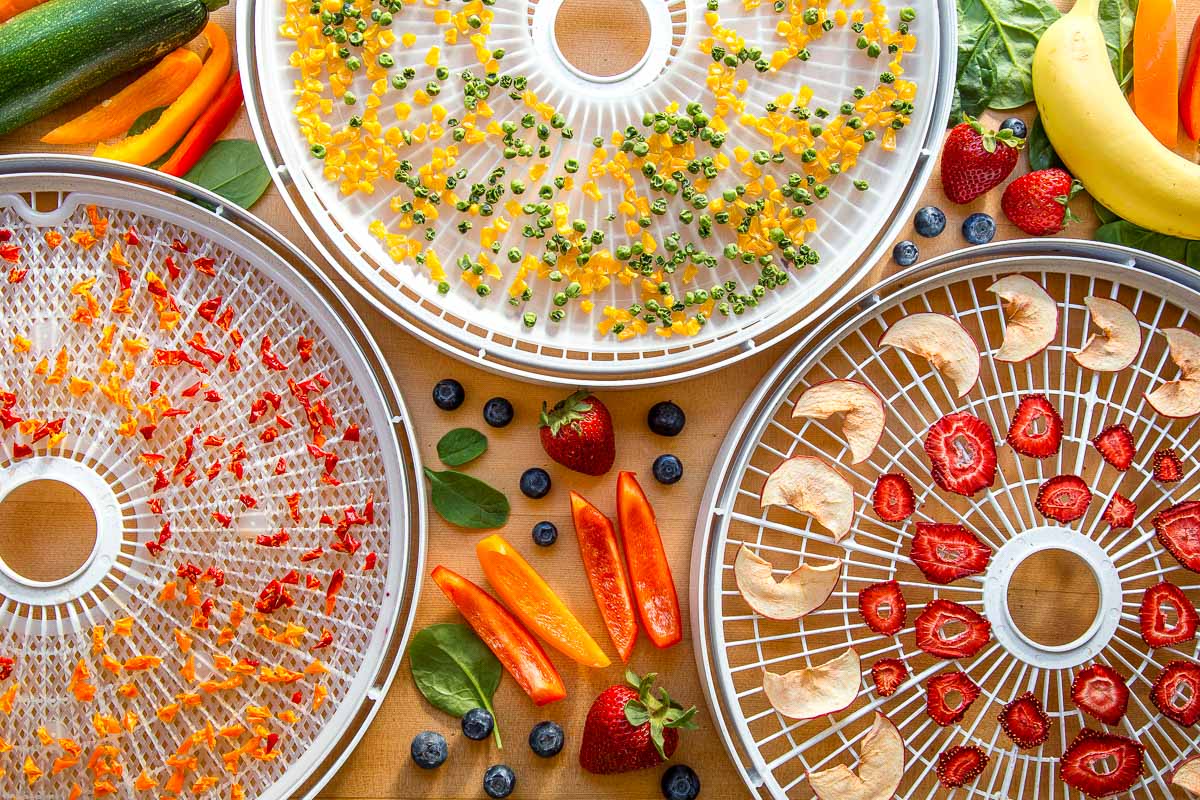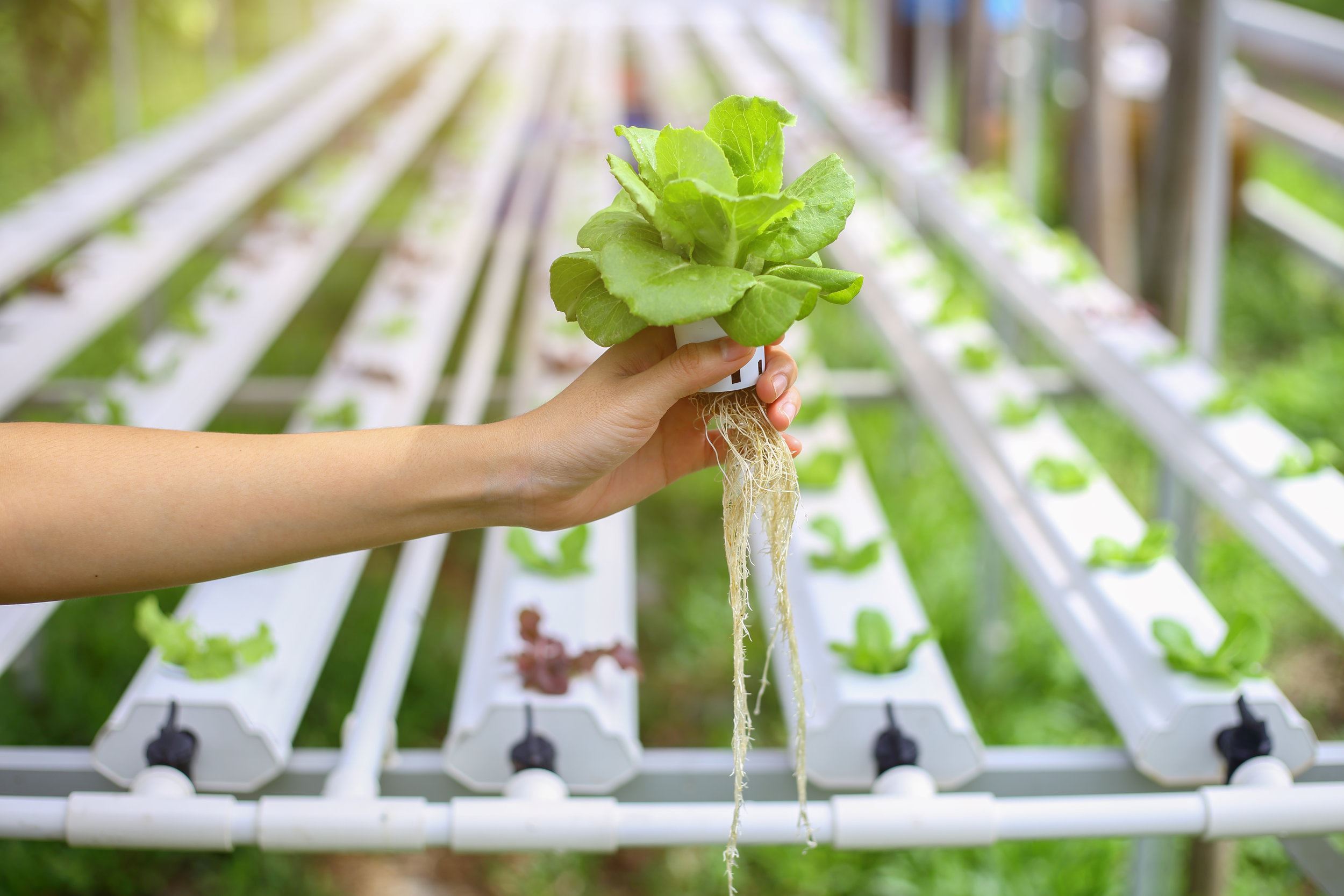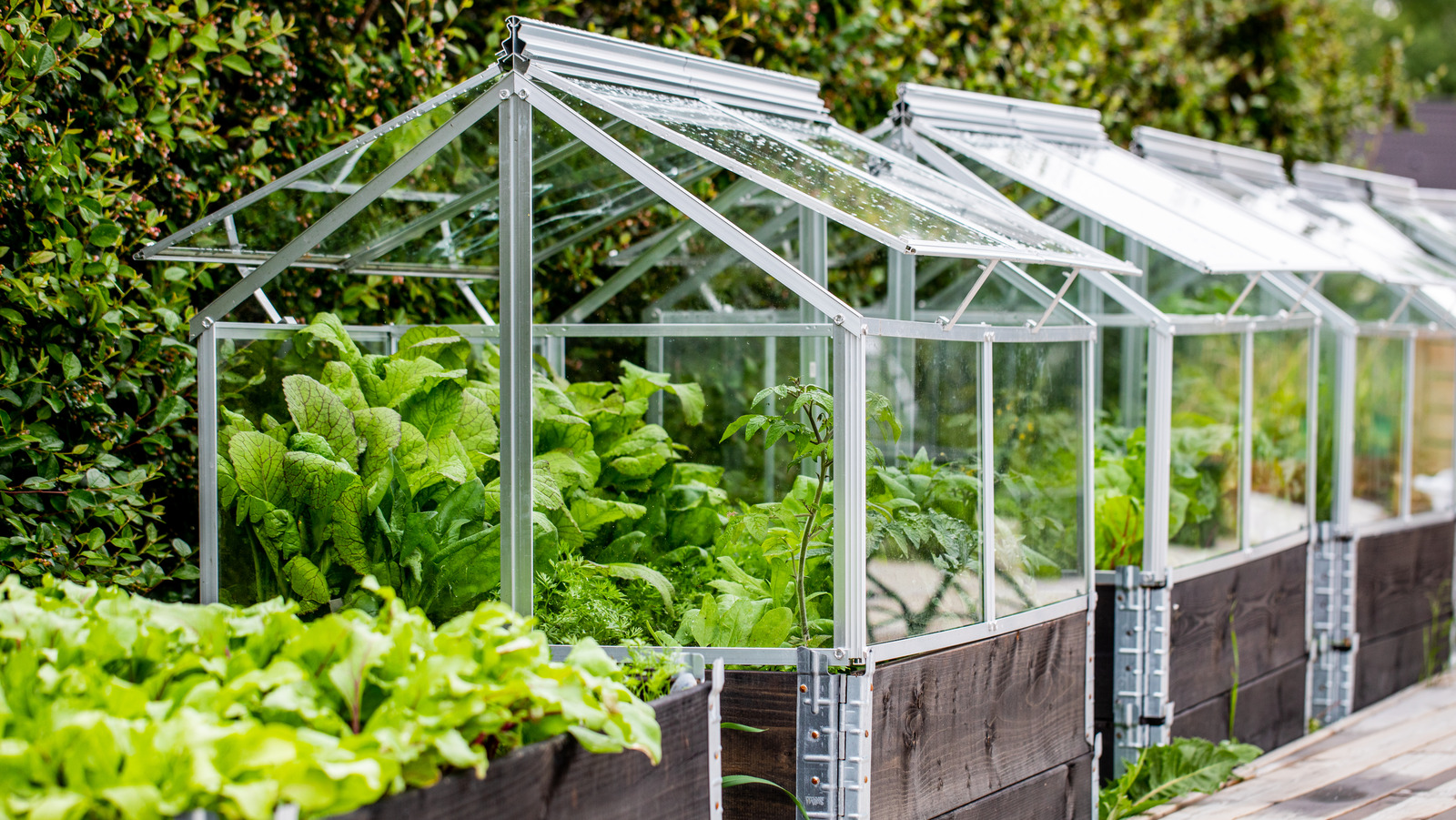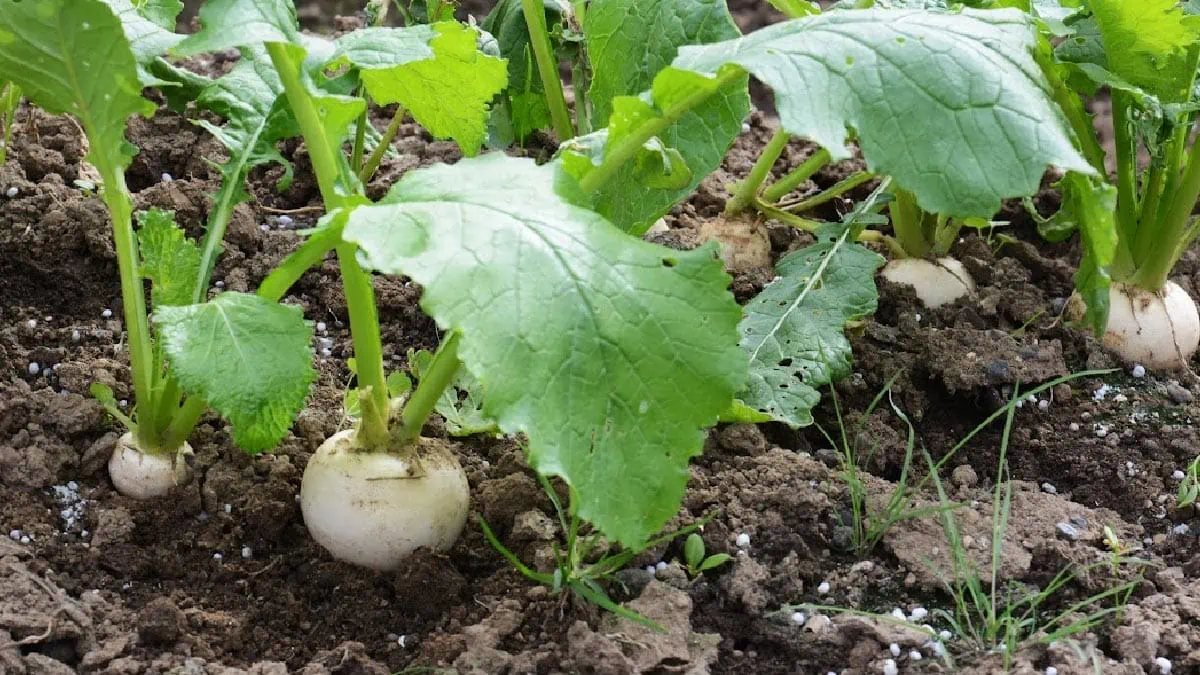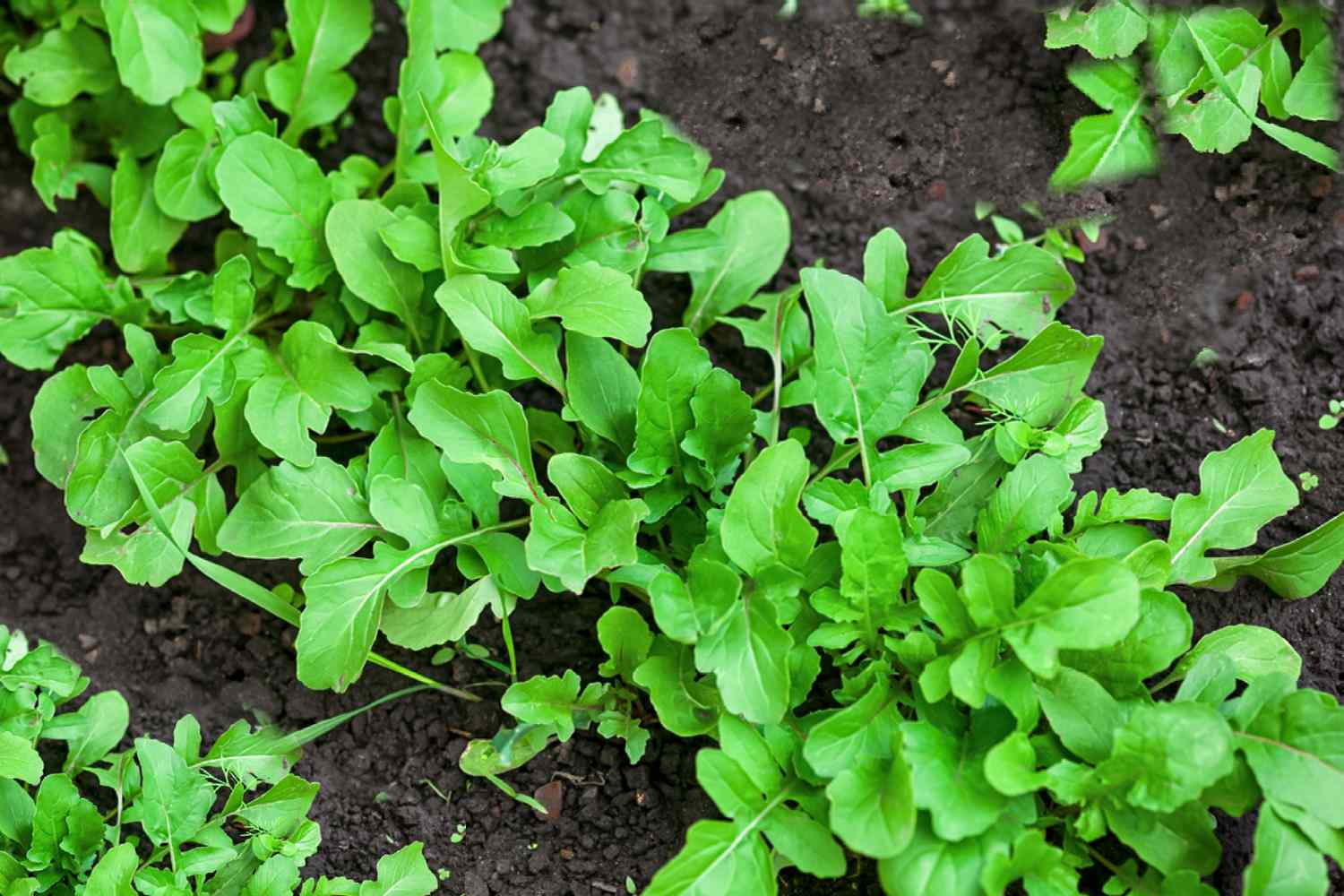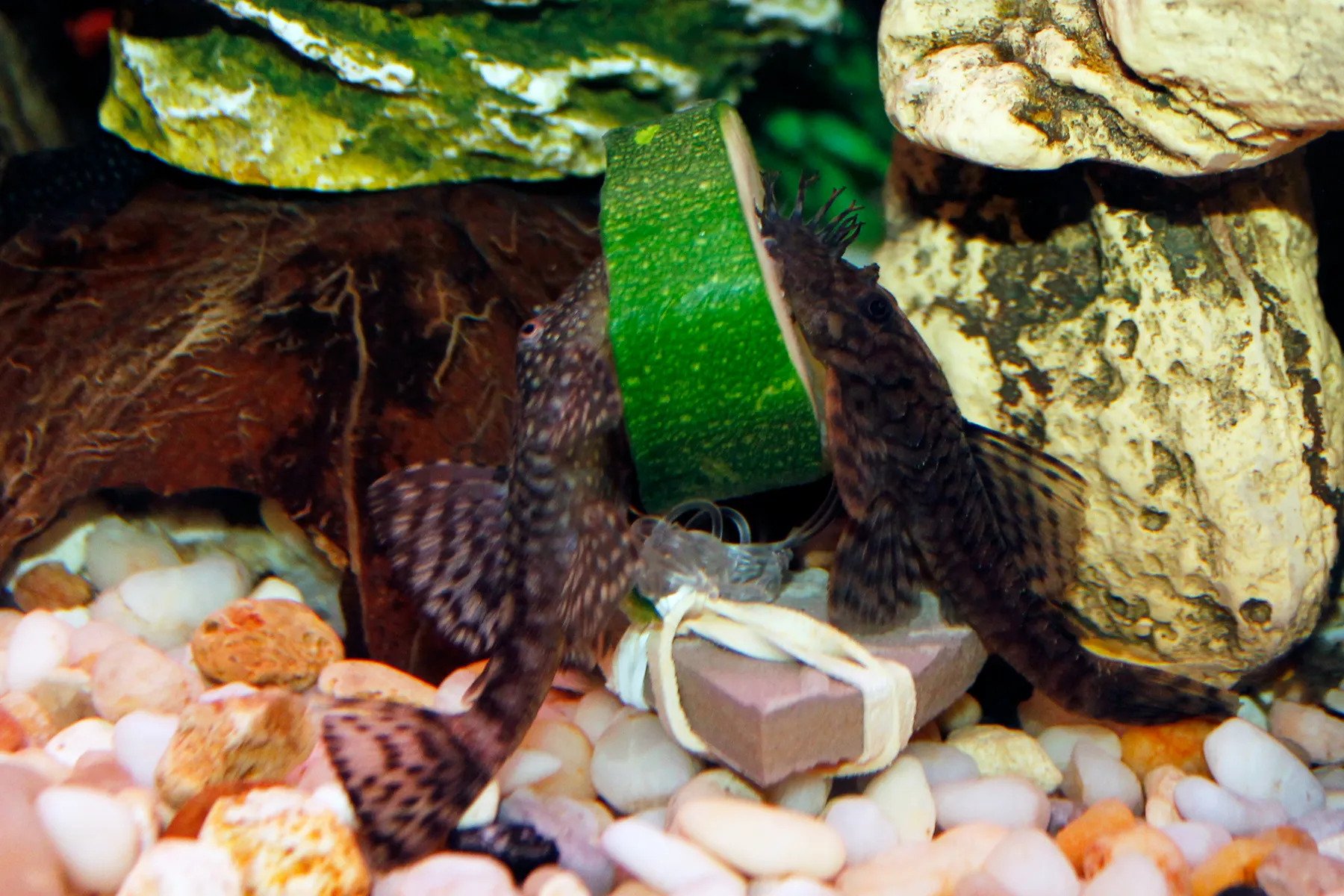Home>Types of Gardening>Edible Gardening>What Vegetables Can Grow In Shade


Edible Gardening
What Vegetables Can Grow In Shade
Modified: January 22, 2024
Discover the best vegetables you can grow in the shade with this ultimate guide to edible gardening. Start your own shaded garden today!
(Many of the links in this article redirect to a specific reviewed product. Your purchase of these products through affiliate links helps to generate commission for Chicagolandgardening.com, at no extra cost. Learn more)
Table of Contents
Introduction
Welcome to the wonderful world of edible gardening! Growing your own vegetables is not only a rewarding experience but also a great way to ensure that you have access to fresh, organic produce right at your doorstep. While many traditional gardeners prefer to plant their crops in full sun, there is a whole array of vegetables that can thrive in shade as well.
Growing vegetables in the shade has gained popularity in recent years, as more and more people are realizing the numerous benefits it offers. Whether you have limited space, live in an urban area with tall buildings casting shadows, or simply have areas in your yard that don’t receive direct sunlight, shade gardening allows you to make the most of your available space and still enjoy a bountiful harvest.
Shade gardening offers several advantages. Firstly, it extends the growing season, as vegetables that thrive in shade can tolerate cooler temperatures and are less prone to bolting or wilting in the heat. Additionally, growing vegetables in the shade can help conserve water, as the soil tends to stay moist for longer periods, reducing the need for frequent watering.
Another benefit of shade gardening is that it provides protection from intense sunlight, which can cause leaf burn and scorching on certain plants. Leafy greens, in particular, prefer the cooler and more diffused light found in shaded areas. Furthermore, growing vegetables in the shade can help prevent the spread of certain plant diseases that thrive in hot and humid conditions.
When it comes to shade gardening, there are a few key factors to consider. The amount of shade you have will determine which vegetables will thrive in your garden. Some vegetables can tolerate partial shade, while others require deep shade throughout the day. It’s important to assess the sunlight conditions in your garden before selecting the appropriate vegetables.
In the following sections, we will explore a variety of vegetables that can successfully be grown in the shade. From leafy greens to root vegetables and herbs, you’ll discover the wide range of options available to create a thriving edible garden, even in the shadiest of spots.
Benefits of Growing Vegetables in the Shade
Growing vegetables in the shade offers several benefits that make it a viable and attractive option for gardeners. Here are some key advantages of shade gardening:
- Extended Growing Season: Shade gardening allows you to extend your growing season, making it possible to harvest fresh vegetables for a longer period. The cooler and more diffused light in shaded areas helps prevent plants from bolting or wilting in hot temperatures, allowing them to thrive even as the summer heat intensifies.
- Conserves Water: Vegetables grown in shaded areas require less frequent watering compared to those in full sun. The shade helps retain moisture in the soil, reducing the need for constant irrigation. This water-saving benefit not only benefits the environment but also saves you time and effort.
- Protection from Sunlight: Shade gardening provides protection from intense sunlight, which can be damaging to certain vegetables. This protection helps prevent leaf burn and scorching, ensuring that your plants remain healthy and vigorous.
- More Tolerant to Heat: Some vegetables are naturally more tolerant to heat and thrive in shaded conditions. By growing these heat-tolerant varieties in shade, you can successfully cultivate them without worrying about wilting or sunburn. This opens up a wide range of options for vegetable selection in regions with hot climates.
- Prevents Spread of Diseases: Certain plant diseases thrive in hot and humid conditions. By growing vegetables in the shade, you can minimize the risk of disease transmission, as shaded areas tend to have cooler and less humid microclimates.
By embracing shade gardening, you can maximize the use of your available space and create a productive vegetable garden in areas that may have previously been overlooked. Whether you have limited sunlight due to tall buildings or trees or simply areas in your yard that don’t receive direct sunlight, shade gardening offers a practical and sustainable solution.
Now that you understand the benefits of growing vegetables in the shade, let’s explore the key factors to consider when embarking on your shade gardening journey.
Factors to Consider When Growing Vegetables in the Shade
While shade gardening can be a rewarding endeavor, there are some important factors to consider to ensure the success of your vegetable crops. Here are the key factors to keep in mind when growing vegetables in the shade:
- Amount of Shade: Different vegetables have varying shade tolerance levels. Some can thrive in partial shade, while others require deep shade throughout the day. Assess the amount of shade in your garden to determine which vegetables will thrive in your specific conditions. You can use a shade cloth or strategically plant taller crops to create the desired level of shade.
- Duration of Shade: In addition to the amount of shade, consider the duration of shade that each area receives. Some vegetables can tolerate short periods of direct sunlight, while others prefer constant shade. Observe the sunlight patterns in your garden throughout the day to find the best spots for growing shade-loving vegetables.
- Soil Quality and Moisture: Shade gardening requires paying attention to soil quality and moisture levels. Ensure that your soil is well-draining and rich in organic matter. Adding compost or well-rotted manure can improve fertility and moisture retention. Regularly monitor soil moisture levels and adjust watering accordingly to prevent overwatering or drying out.
- Airflow and Ventilation: Shaded areas tend to have reduced airflow and ventilation, which can increase the risk of plant diseases. To mitigate this, ensure there is adequate spacing between plants, allowing for proper airflow. Prune any overcrowded foliage and provide sufficient spacing to minimize the risk of fungal infections and other diseases.
- Variety Selection: Choose vegetable varieties specifically suited for shade gardening. Look for varieties that are known for their shade tolerance or heat resistance. Consult with local gardening experts or check seed catalogs for recommendations on shade-loving vegetable varieties that will thrive in your area.
By considering these factors, you can create optimal growing conditions for your vegetables in shaded areas. Remember to keep an eye on plant health, regularly inspecting for signs of pest or disease infestation. With proper planning and care, you can enjoy a bountiful harvest of fresh and flavorful vegetables from your shade garden.
Leafy Vegetables That Can Grow in the Shade
If you love fresh greens in your salads or stir-fries, you’ll be delighted to know that several leafy vegetables thrive in shaded conditions. These shade-loving leafy greens are not only delicious but also packed with vitamins and minerals. Here are some leafy vegetables that you can grow in the shade:
- Lettuce: Lettuce is a classic salad green that can thrive in partial shade. With its diverse variety of leaf shapes and colors, you can grow different types of lettuce to add visual interest to your garden. Look for loose-leaf or romaine varieties that are known for their shade tolerance.
- Spinach: Spinach is a nutrient-rich leafy green that is a great addition to any shade garden. It prefers cooler temperatures and can tolerate some shade. Harvest the young leaves for fresh salads or sauté them for a nutritious side dish.
- Swiss Chard: Swiss chard is a versatile leafy green that can handle partial shade. Its vibrant and colorful stems add visual appeal to the garden, and both the leaves and stems are edible. Harvest the outer leaves as needed, allowing the inner ones to continue growing.
- Kale: Kale is a hardy and nutritious green that can tolerate shade. It is an excellent source of vitamins A, C, and K. Some varieties, such as Lacinato or Red Russian, are more shade-tolerant than others. Harvest the outer leaves, and the plant will continue to produce new growth.
- Mizuna: Mizuna, a Japanese green, is a flavorful and mild leafy vegetable that thrives in partial shade. Its feathery leaves add a unique texture to salads and stir-fries. Harvest the leaves when young for the best flavor.
When growing leafy vegetables in the shade, ensure that they receive at least a few hours of sunlight each day. While they can tolerate some shade, they still require some light to photosynthesize and grow properly. Regularly harvest the outer leaves to promote continuous growth and prevent overcrowding.
By including these shade-loving leafy vegetables in your garden, you can enjoy an abundance of fresh and nutritious greens throughout the growing season.
Root Vegetables That Can Grow in the Shade
Root vegetables may not be the first thing that comes to mind when considering shade gardening, but there are actually several types that can thrive in shaded conditions. These underground treasures are packed with flavor and nutrients, making them a great addition to your shade garden. Here are some root vegetables that can be successfully grown in the shade:
- Beets: Beets are a versatile root vegetable that can tolerate partial shade. They come in a range of colors, including red, golden, and striped varieties. The earthy and sweet flavor of beets makes them a popular choice for salads, roasting, or pickling.
- Radishes: Radishes are quick-growing root vegetables that can handle shaded areas. They add a spicy and crisp kick to salads and are often used as garnishes. Look for varieties that are specifically labeled as shade-tolerant for best results.
- Carrots: While carrots typically prefer full sun, some varieties can grow in partial shade. Look for varieties that are specifically bred for shade tolerance. The roots may not grow as large as those in full sun, but they will still develop a sweet and flavorful taste.
- Turnips: Turnips are a cool-season root vegetable that can tolerate partial shade. They have a slightly peppery flavor and a tender texture when harvested at the right size. Both the roots and the greens of turnips are edible and can be enjoyed in various dishes.
- Parsnips: Parsnips are root vegetables that prefer cool temperatures and can tolerate light shade. They have a sweet and nutty flavor that intensifies after the first frost. The longer they stay in the ground, the sweeter they become.
When growing root vegetables in the shade, it’s essential to provide them with loose and well-draining soil. Ensure that the soil has adequate organic matter to promote root development. Monitor soil moisture levels and water consistently to prevent drying out or overwatering.
While these root vegetables can tolerate shade, it’s still important to provide them with some sunlight exposure each day. Aim for at least a few hours of direct or indirect sunlight to support their growth and development. Regularly thin out crowded seedlings to give the roots ample space to mature.
By including these shade-tolerant root vegetables in your garden, you can enjoy a diverse and delicious harvest of underground delights.
Herbs That Can Grow in the Shade
If you enjoy adding flavor and aroma to your dishes, growing herbs in shaded areas can be a great option. While most herbs thrive in full sun, there are several varieties that can tolerate shade and still provide you with fresh and fragrant leaves. Here are some herbs that can grow in the shade:
- Mint: Mint is a prolific herb that can tolerate shade. It grows quickly and spreads easily, so it’s a good idea to grow it in a contained space or in a pot. Mint leaves can be used in teas, cocktails, salads, and other culinary creations.
- Parsley: Parsley is a versatile herb that can grow in partial shade. It has a fresh and vibrant flavor that complements a wide range of dishes. Both curly and flat-leaf parsley varieties can tolerate shade, but they may have a milder flavor compared to those grown in full sun.
- Chives: Chives are another herb that can grow in shaded areas. They have a mild onion flavor and are commonly used as a garnish or in recipes that call for a subtle onion taste. Chives produce attractive purple flowers that can add beauty to your garden.
- Coriander/Cilantro: Coriander, also known as cilantro, can tolerate some shade. It has a unique flavor profile, with the leaves known for their fresh and citrusy taste, while the seeds are used as a spice. Planting successive batches of coriander seeds throughout the growing season can ensure a continuous harvest.
- Thyme: Thyme is an herb that can tolerate both shade and dry conditions. It has a fragrant and earthy flavor that pairs well with a variety of dishes. Thyme leaves can be used fresh or dried to add depth of flavor to soups, stews, marinades, and more.
When growing herbs in the shade, it is important to monitor soil moisture levels. While herbs may not require as much water as other plants, it’s essential to ensure that the soil remains consistently moist but not waterlogged. Well-draining soil mixed with organic matter can help provide optimal growing conditions.
While these herbs can tolerate shade, they still require some sunlight exposure to flourish. Aim to provide them with at least a few hours of direct or indirect sunlight each day. Regularly harvest the leaves to encourage new growth and to keep the plants compact and bushy.
By including these shade-tolerant herbs in your garden, you can enjoy a bountiful supply of fresh flavors to enhance your culinary creations.
Tips for Successful Vegetable Gardening in the Shade
Gardening in shaded areas requires some unique considerations to ensure the success of your vegetable crops. Here are some tips to help you achieve a thriving shade garden:
- Assess Sunlight Conditions: Determine the amount and duration of shade in your garden by observing the sunlight patterns throughout the day. This will help you select vegetables that are best suited to your specific shade conditions.
- Choose Shade-Tolerant Vegetables: Select vegetable varieties that are known for their shade tolerance. These include certain leafy greens, root vegetables, and herbs that can thrive in shaded conditions. Consider consulting with local gardening experts or researching seed catalogs for shade-friendly vegetable options.
- Provide Adequate Watering: Shaded areas tend to retain more moisture, so it’s important to monitor soil moisture levels and avoid overwatering. Water the vegetables as needed, ensuring the soil is moist but not waterlogged. Mulching can help retain soil moisture and regulate temperature.
- Improve Soil Fertility: Enrich the soil with organic matter, such as compost or well-rotted manure. This will help improve soil fertility and moisture retention. Consider conducting a soil test to determine if any specific nutrients need to be added to promote healthy plant growth.
- Prune and Thin Plants: Regularly prune and thin out plants to improve airflow and prevent overcrowding. This will reduce the risk of diseases and ensure that each plant has enough space and resources to grow and thrive.
- Monitor for Pests and Diseases: Regularly inspect your plants for pests and diseases, as shaded areas can sometimes harbor more pests. Implement organic pest control methods and promptly address any signs of disease to prevent them from spreading.
- Rotate Crops: To prevent nutrient depletion and reduce the risk of diseases, practice crop rotation. Avoid planting the same vegetable families in the same spot year after year. Rotate different vegetables to different areas of your garden on a seasonal basis.
- Experiment with Shade Structures: If you have partial shade, consider using shade cloths or other structures to create shade in specific areas. This allows you to have more control over the amount and intensity of shade, enabling you to grow a wider range of vegetables.
- Stay Consistent with Care: Lastly, maintain consistency with your gardening care routine. Monitor your garden regularly and provide the necessary attention, such as watering, fertilizing, and harvesting. Even though shaded areas require less direct sunlight, they still require regular care and maintenance.
By following these tips and adapting your gardening practices to accommodate shaded areas, you can create a flourishing vegetable garden and enjoy a plentiful harvest of homegrown produce.
Conclusion
Shade gardening opens up a world of possibilities for growing vegetables, even in areas that receive limited sunlight. By understanding the benefits and considering the necessary factors, you can successfully cultivate a diverse array of plants in shaded areas.
Growing vegetables in the shade offers numerous advantages, such as extending the growing season, conserving water, providing protection from intense sunlight, and preventing the spread of certain plant diseases. It allows you to make the most of your available space, whether you have limited sunlight due to buildings or trees or areas in your yard that don’t receive direct sunlight.
When embarking on shade gardening, it’s crucial to assess the amount and duration of shade, choose shade-tolerant vegetables, provide proper watering, improve soil fertility, monitor for pests and diseases, and practice regular pruning and thinning. Experimenting with shade structures and staying consistent with care will further enhance your shade gardening experience.
Whether you’re growing shade-loving leafy vegetables, root vegetables, or herbs, remember to provide some sunlight exposure, maintain soil moisture levels, and regularly harvest to promote continuous growth. With care and attention, your shade garden can yield a bountiful harvest of fresh and flavorful produce.
So, embrace the possibilities of shade gardening, unleash your creativity, and enjoy the satisfaction of growing your own vegetables in even the shadiest of spots.
